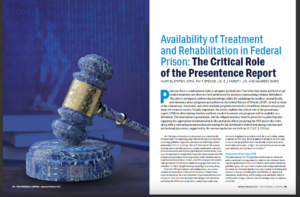Provide Your Probation Officer With Everything 1-2 weeks Before Your PSI.
The information in this series and on PPRSUS.com (and PPRSUS Resources) is readily accessible and completely Free to all.
Hello, and thank you for tuning into my Video series, INDICTED AND FACING PRISON: NOW WHAT?
My name is Marc Blatstein. In 2006, I, too, was Indicted and convicted of a felony, and I lost my medical license. To call this a life-altering event, at best, is an understatement. With work, I got my license reinstated— Prison is Temporary.
My goal in this series is to provide you with the information you’ll need to survive and navigate these times because Knowledge and Preparation will help build back the Confidence you’ll need throughout this process.
- Since you’ve heard that the DOJ and Feds have been asking questions, their case against you is mostly complete, with a 98% Conviction Rate.
- Delaying to act now is at your peril.
- Hiring a legal team doesn’t just mean they have experience; they also need a proven track record of successfully defending cases like yours.
- The choices you make today – will make a better tomorrow.
Ideally, You want everything provided to the Probation Officer 1-2 weeks before the Presentence Interview.
- Provides a comprehensive background on the defendant
- Well written, a Personal NARRATIVE should contain all the information your Probation Officer needs
“Why? Probation Officers are:
- Overworked and have no time, with some appreciating counsel’s effort in organizing everything they’ve requested and providing it to them early.
- They can now take their time to fill in their Probation Report. Then, on the day of the interview, they’ll have the time to personally get to know your client and ask any remaining questions they may have.
- At the end of their meeting, the Probation Officer may feel that the defendant took this seriously, leaving them with a more positive view of your client, other than the person referenced in their Indictment.”
a) It provides information about the offense for which the defendant is being sentenced,
b) Acceptance of Responsibility and
c) Victim Remorse statement,
d) Release Plan,
e) and where the sentencing guidelines apply.
· This includes background information about the defendant, such as
· Criminal history, education, work experience, family background, and health history,
f) A Realistic Sentence Recommendation and BOP Placement Request Could Also Be Included
To engage my services or to have your concerns answered, Call me Today: 240.888.7778. This is my Cell and I personally answer and return all calls.
You can also get additional information on my website @: PPRSUS.com.








